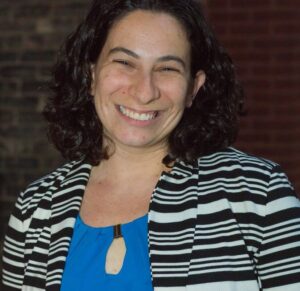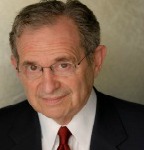
The Power of a Blessing
Jun 2, 2023 By Eliezer B. Diamond | Commentary | Naso
Anyone I know who grew up in a synagogue where the kohanim dukhened on the Yamim Tovim remembers this as one of the peak moments of their
synagogue experience. There are many reasons for this: the strange sight of men (and now women) standing with their hands extended and with their heads and upper faces covered by tallitot, the fact that we were in fact not to gaze upon this startling spectacle, and the sense of protection afforded to those of us whose parents covered them with their own tallitot during the rendering of the blessing in order to protect them from the potentially harmful effects of looking upon the kohanim.

Reliving Revelation
May 19, 2023 By Gordon Tucker | Commentary | Bemidbar
The fourth book of the Torah (“Bemidbar Sinai”) begins with a census of the (male) heads of clans among the Israelites in the second year of their freedom. And then, it lays out the pattern according to which the 12 tribes and the religious functionaries (levi’im and kohanim) are to set up camp in the wilderness. When you read it, you are struck by the attention to detail and good order, something which is rather typical in documents with a priestly source.
Read More
Growing Into Torah
May 12, 2023 By Megan GoldMarche | Commentary | Behar | Behukkotai
For this week’s parashiyot, Behar-Behukkotai, I might ask: What is something that you took or borrowed from someone that you know it is time to return, perhaps because it is the right thing to do or because it will make you feel lighter? This can be a physical thing like a book or shirt, or something intangible like the hope or support you received from someone. If you are hosting shabbat dinner this week I encourage you to try it out, with a brief explanation of the ideas of Jubilee and returning land to its original owners that appears in this week’s parashah.
Read More
The Problem of Embodied Perfection
May 4, 2023 By Lauren Tuchman | Commentary | Emor
Parashat Emor (Leviticus 21–24) opens with a passage describing limitations placed on individuals whom a kohen (priest) may mourn or marry, as well as limiting sacrificial service in the Mishkan to those who are able-bodied. We learn in Leviticus 21:17 that any kohen who has a mum—blemish or defect—is explicitly forbidden from “offering the food of his God” (21:17). Kohanim thus disqualified include those who are blind, lame, have a limb length discrepancy, are hunchbacked, have a broken limb, and many others. They are forbidden from ritual leadership throughout the ages; though not stripped of their priestly status and are permitted to eat sacrificial meat. They are not permitted to come behind the curtain or approach the altar. They mustn’t profane these places which God has sanctified (21:22–23).
Read More
Making God Holy
Apr 28, 2023 By Amram Altzman | Commentary | Aharei Mot | Kedoshim
Parashat Kedoshim, the second of the two parashiyot that we read this week, ends just as it begins: with an imperative for us, the Children of Israel, to be holy. Our parashah opens with, “קדשים תהיו/You shall be holy,” and the penultimate verse tells us that, “והייתם לי קדשים/You shall be holy to Me, for I God am holy, and I have set you apart from other peoples to be Mine” (Lev. 20:26). Although almost identical, our parashahends with the idea that we are not just holy in general, but are specifically designed as holy to God. How, then, are we supposed to not just be holy, but holy to God?
Read More
It Passes and We Stay
Apr 21, 2023 By Jan Uhrbach | Commentary | Metzora | Shabbat Rosh Hodesh | Tazria
The double parashiyot of Tazria and Metzora are devoted in their entireties to the Biblical notion of tumah, usually translated as “impurity.” In them, we learn three of the major sources of tumah: childbirth (Lev. 12); a condition known as tzara’at, which can manifest on skin, clothing, or the walls of one’s house (Lev. 13–14); and bodily secretions (Lev. 15). The two other primary sources of tumah are touching or carrying the carcasses of certain animals (Lev. 11) and contact with a human corpse (Num. 19).
But what is the essential nature of tumah, and what does it have to do with Emily Dickinson’s poem?
Read More
A Love That Transforms
Apr 14, 2023 By Leonard A. Sharzer | Commentary | Shemini
Commentaries through the ages have focused on the actions of Aaron’s eldest sons, asking whether being slain by God’s holy fire was, in fact, a punishment—and if so, what exactly it was that they being punished for. Most commentators conclude that the deaths of Nadav and Avihu were indeed punishment, but disagree as to the nature of their transgression: they were drunk when they entered the sanctuary; they were improperly clothed; they had not washed their hands and feet; they were unmarried; they had entered the holy place without authorization; or they had expounded the law before Moses, their teacher. What we can conclude from this plethora of possible explanations is that no one knows for sure why they were killed. Commentators are equally intrigued and perplexed by Moses’s statement to Aaron, and Aaron’s subsequent silence, in the face of this horrific tragedy.
Read More
Leaving Egypt with Compassion and Justice
Apr 8, 2023 By Ben Levy | Commentary | Pesah
The Torah reading for Shabbat Hol Hamoed Pesah (Exodus 33:12–34:26) describes the aftermath of the Golden Calf. How do we make sense of this choice?
Read More


